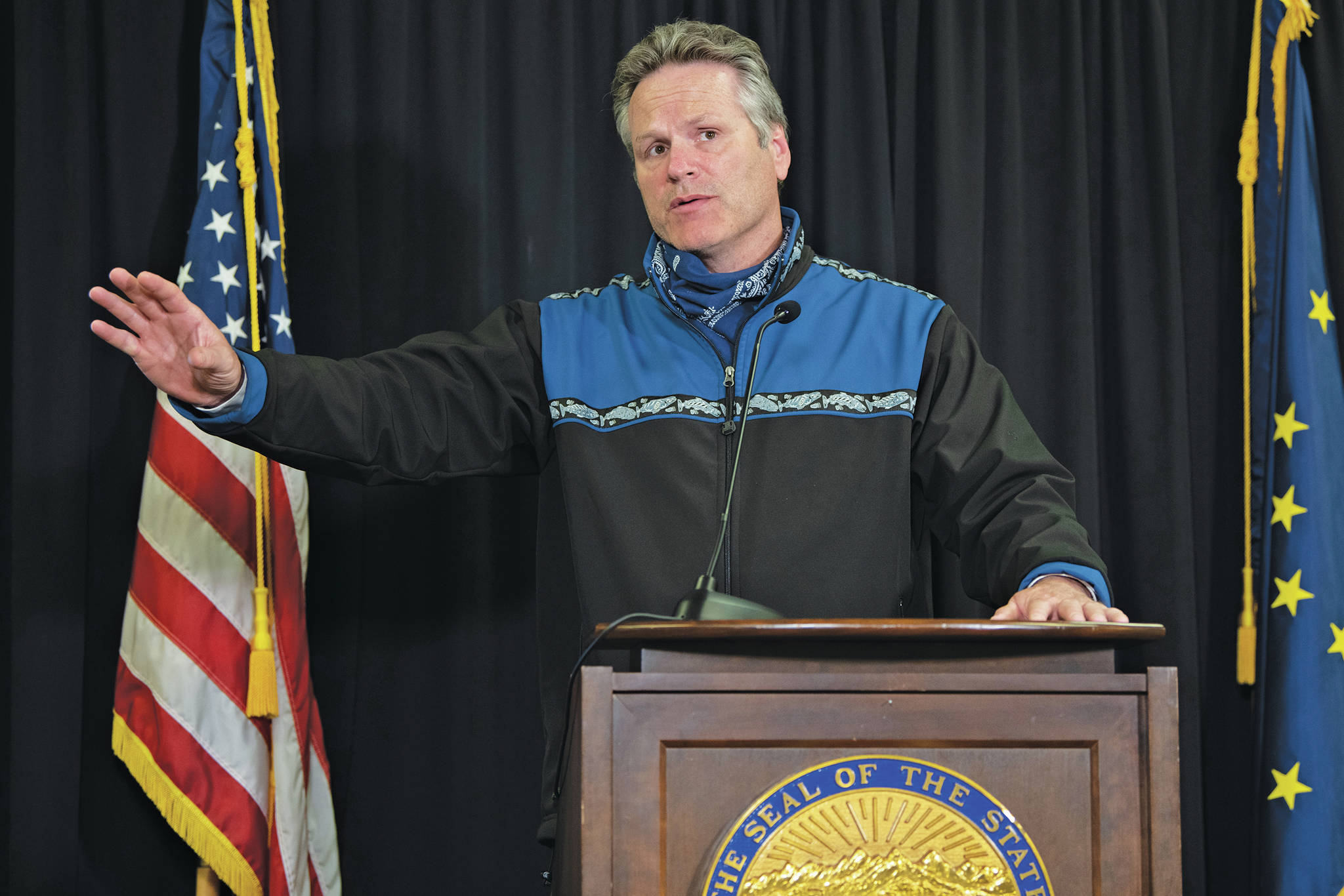As Alaska saw one of its highest single-day increases in new positive cases of COVID-19, and as the state heads into the Fourth of July holiday weekend, Gov. Mike Dunleavy urged Alaskans to continue mitigation measures to slow the spread of the novel coronavirus.
That includes wearing face coverings when in confined spaces like grocery stores, practicing social distancing and washing hands frequently, Dunleavy said in a Tuesday press conference in Anchorage. People also should be mindful of social gatherings.
“Don’t get complacent,” he said. “… Put some distance between you and others. I strongly suggest you do this. … I’m just asking you, especially with this weekend coming, that we show, not just ourselves, but we show this country that Alaskans can think of others.”
Recovered cases now total 528, with two new recovered cases recorded for Tuesday. A total of 114,400 tests have been conducted as of Tuesday. The average percentage of daily positive tests for the previous three days is 1.48%.
That positivity rate puts Alaska at the lowest in the nation, with its overall test numbers ranked sixth.
As of June 28, the Kenai Peninsula had the highest rate of infection over a 14-day average at 3.9 per 100,000 people, followed by Fairbanks at 3.2 per 100,000 and Anchorage at 2.4 per 100,000. Statewide the average per capita rate of positive cases is 2.4 per 100,000. The Juneau Region has the lowest rate of positive cases, 1.6 per 100,000.
“Numbers are growing,” Dunleavy said. “… We have more mixing. We have travel. We have folks coming from Outside to work in Alaska. Our positives are going up. We knew that.”
Death rates are still low, with 14 deaths of Alaska residents. Four of them died while in the Lower 48.
Dunleavy said state health care resources remain strong. Of 1,900 beds, 1,000 are occupied. Intensive care unit beds are 198 total, with 80 occupied. The ventilator capacity is 347, with 27 used; only one is for a COVID-19 patient. The hospitalization rate for Alaska COVID-19 patients is 9 per 100,000, compared to the national rate of 98 per 100,000.
Anchorage hospitals are running at 80% capacity, said Alaska Chief Medical Officer Dr. Anne Zink.
“Our equipment and bed capacity is still in pretty good shape,” Dunleavy said.
The spike in cases could raise concerns about plans to reopen schools in the fall, but in response to a question from the Homer News on that point, Dunleavy said it’s too early to predict how schools will reopen.
“This is a once-in-a-lifetime event. It’s a pandemic,” he said. “… A lot of these answers we simply don’t know. … We’re gearing up for a couple of different possibilities. … We’re trying to come up with a number of contingencies.”
With increases of cases at contact points like bars, Dunleavy was asked if we he might dial back some of the health mandates. He said the state was constantly looking at COVID-19 trends and how to respond.
“Everything is on the table to fight a pandemic. There is no doubt about that,” Dunleavy said.
Responding to the pandemic is like squeezing a long balloon, he said.
“You can press on one side (and) it’s manifested somewhere else in the system,” Dunleavy said. “… We’ll take a look at this. We’ll act appropriately on behalf of Alaskans.”
As a mitigation measure, face coverings are sometimes controversial.
“You know, the whole concept of a mask, a face covering, is becoming politicized. It shouldn’t be that,” Dunleavy said.
Evidence shows that people should limit projection like coughing or sneezing to keep the virus from spreading, Dunleavy said. Masks can help do that.
“I think most people would say, if you can limit your projection, your cough, your sneezing, that means you help,” he said.
People should think about why others wear masks, he said. Dunleavy said he wears a mask when he goes into stores or is in confined spaces where it’s hard to maintain social distancing.
“If you can wear a face covering when you go into a grocery store, I want to leave you with a thought,” he said. “Next to you might be an individual who is going home to a child undergoing cancer treatment. Next to you might be a young man going home to his parents … he’s got elderly parents.”
Reach Michael Armstrong at marmstrong@homernews.com.


